
It is too easy for hobbyists, especially new ones, to become obsessed with the cleanliness of a fish tank, as opposed to the correct balance of a tank. It is important to remember that in reality, the key to success in keeping fish in glass boxes is keeping the beneficial bacteria that drive the nitrogen cycle. More fish have been lost to folks who insist on completely cleaning the filter every week and getting rid of every speck of algae than have been lost due to a lack of cleanliness.
That said, before we take a look at the specific things that a hobbyist needs to correctly maintain a fish tank, please allow me one more comment, which I hope is no more heretical than my preferring maintenance overcleaning: Don’t be afraid to get your hands wet. Proper aquarium maintenance does require your hands getting wet. Therefore, whenever you are going to do some aquarium maintenance, it is important that your hands do not have soap, detergent or any other foreign chemical on them. Rinse your hands in water and dry them off well before doing anything in your tank(s). If you really are averse to getting your hands wet, purchase long rubber gloves to wear whenever you are working with your fish — but make sure all that anyone ever uses the gloves for is working with your fish.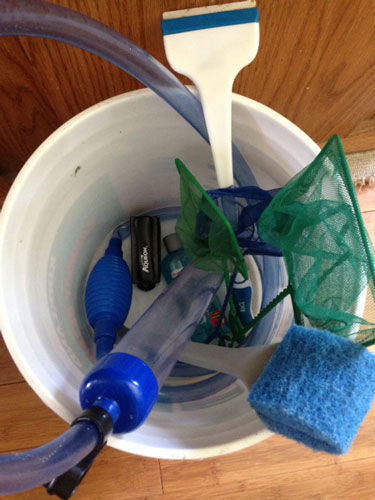
Here is a maintenance bucket with an algae scraper (12 o’clock) small and large net, soft scrubber, gravel cleaner/water change hose, glass cleaner, and a bottle of water conditioner on the bottom of the bucket. Photo by John Virata
Everything that you will need to maintain aquariums can be kept in a 5-gallon plastic bucket, the kind you can purchase at any home center. When you have the bucket, put a couple of pieces of masking tape on it, and write on the tape "for my fish tank only.” One of the prime directives (if you can have more than one prime directive — sorry, Star Trek fans) is that your fish tank main-tenance bucket and everything in it must be used only for your fish tanks. Using them even once for something else poses a great risk of conta-minating everything.
Inside the 5-gallon "fish-only” bucket, the things you will need are:
A couple of smaller dipping containers. These can be the plastic containers foods come in (yogurt container or something similar). One helpful hint: Having square or rectangular containers is better than round ones. It is much easier to remove gravel or a fish using something with square corners rather than rounded.
A siphon/gravel cleaner. Since it is important that you do regular water changes, you will need a siphon to remove tank water (which you tote away in the 5-gallon bucket). The best thing to get is a combination siphon and gravel cleaner, so you can stir up the gravel and suck out dirt as you siphon the water. This piece of equipment should consist of a piece of clear plastic flexible tubing about a half inch in diameter and a much wider piece of plastic at one end. The wider end allows you to stir up the gravel and suck the released dirt out while only gently lifting the gravel and not sucking it out.
Water conditioner. Whenever you add new water — either to make up for evaporation, or better yet, when you do those regular partial water changes — make sure to condition the new water to remove chlorine, chloramines and heavy metals.
Nets. These are always needed, and it is best to have at least two sizes. This can be especially important if you have to catch a fish to remove it from the tank, a task made much easier with two nets rather than a single one. Use one of the nets to coax the target fish into the other net.
Algae removers. For this, you need a scrubbie pad and a long-stick algae remover. Buy algae scrubbers at a local fish store, not at a supermarket. Sponges made for housecleaning have chemicals or soap already in them that can be harmful to your fish.
When going after the algae in an aquarium, it is best to clean off only the front glass. Leaving a good healthy algae growth on the other three sides of a tank really adds to the health of the tank. As stated earlier, you don’t want an aquarium to be absolutely clean everywhere.
If you asked your fish about the most important thing in keeping them "happy,” they would tell you consistency. Consistency itself is the key to happy fish in an aquarium. Many of the places in nature where our fish originally come from experience large seasonal changes; the Amazon River, for example, rises by as much as 15 meters between the dry and rainy seasons, as do many Asian habitats, but these changes are gradual and natural. Virtually all of the fish that you will find in your local fish store are many generations removed from the wild, having been raised on commercial fish farms. At all stages in their lives — the fish farm, distributor, wholesaler and your local fish store — every attempt has been made to keep the conditions for the fish consistent. If you are to have success keeping our finned friends, aim for keeping their conditions as consistent as possible.
To maintain this, I suggest that you:
A practically sterilized aquarium is not necessarily the best kind of tank for your fish. Regular maintenance, in terms of partial water changes, only removing algae from the front glass and cleaning half of your filter media at the most at any single time are important. Remember that keeping fish is really keeping the beneficial bacteria of the nitrogen cycle, and making a tank so clean that it is spotless will wipe out many of these good bacteria.
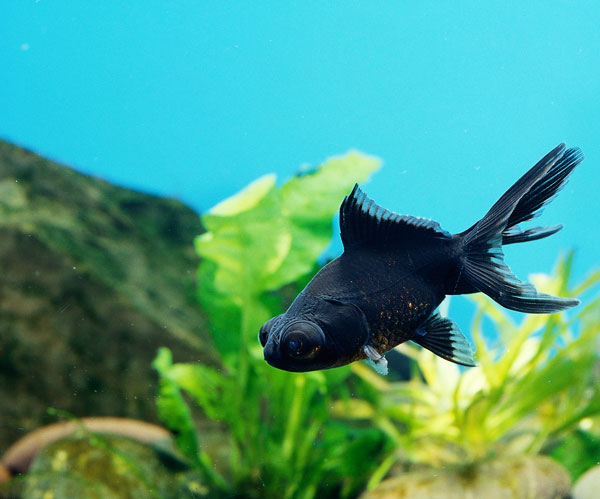 Fish and Fungus
Black Moor Q. I have two large black moor goldfish, one larg
Fish and Fungus
Black Moor Q. I have two large black moor goldfish, one larg
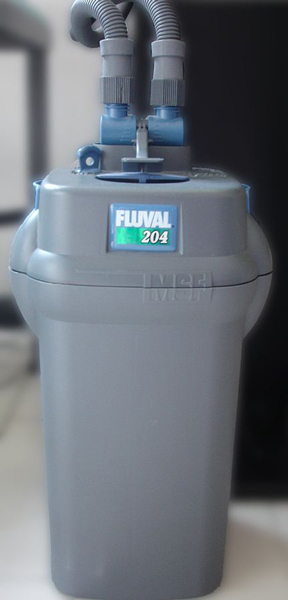 Canister Filters
In this article we will deal with a type of filter that many
Canister Filters
In this article we will deal with a type of filter that many
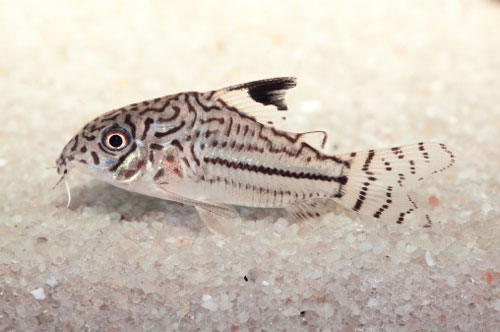 Keep Your Aquarium Clean With These Tank Tools
Success in maintaining a freshwater system takes applied kno
Keep Your Aquarium Clean With These Tank Tools
Success in maintaining a freshwater system takes applied kno
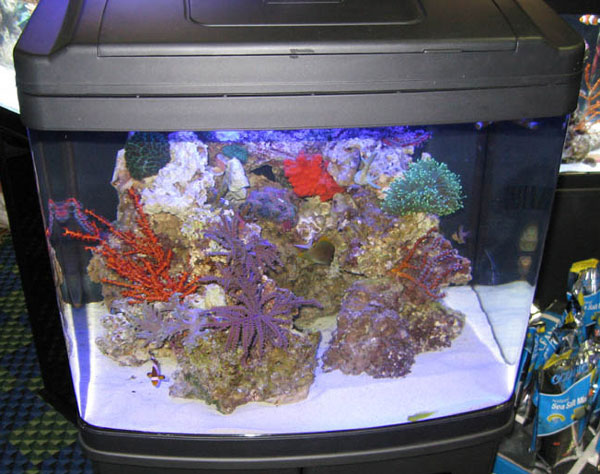 Marine Nano Tank Problems
Marine Nano Tank Problems
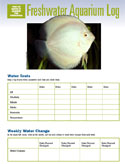 Aquarium maintenance logs for freshwater, saltwater and reefkeeping aquarists
Thank you for signing up for the FishChannel newsletter, the
Aquarium maintenance logs for freshwater, saltwater and reefkeeping aquarists
Thank you for signing up for the FishChannel newsletter, the
Copyright © 2005-2016 Pet Information All Rights Reserved
Contact us: www162date@outlook.com